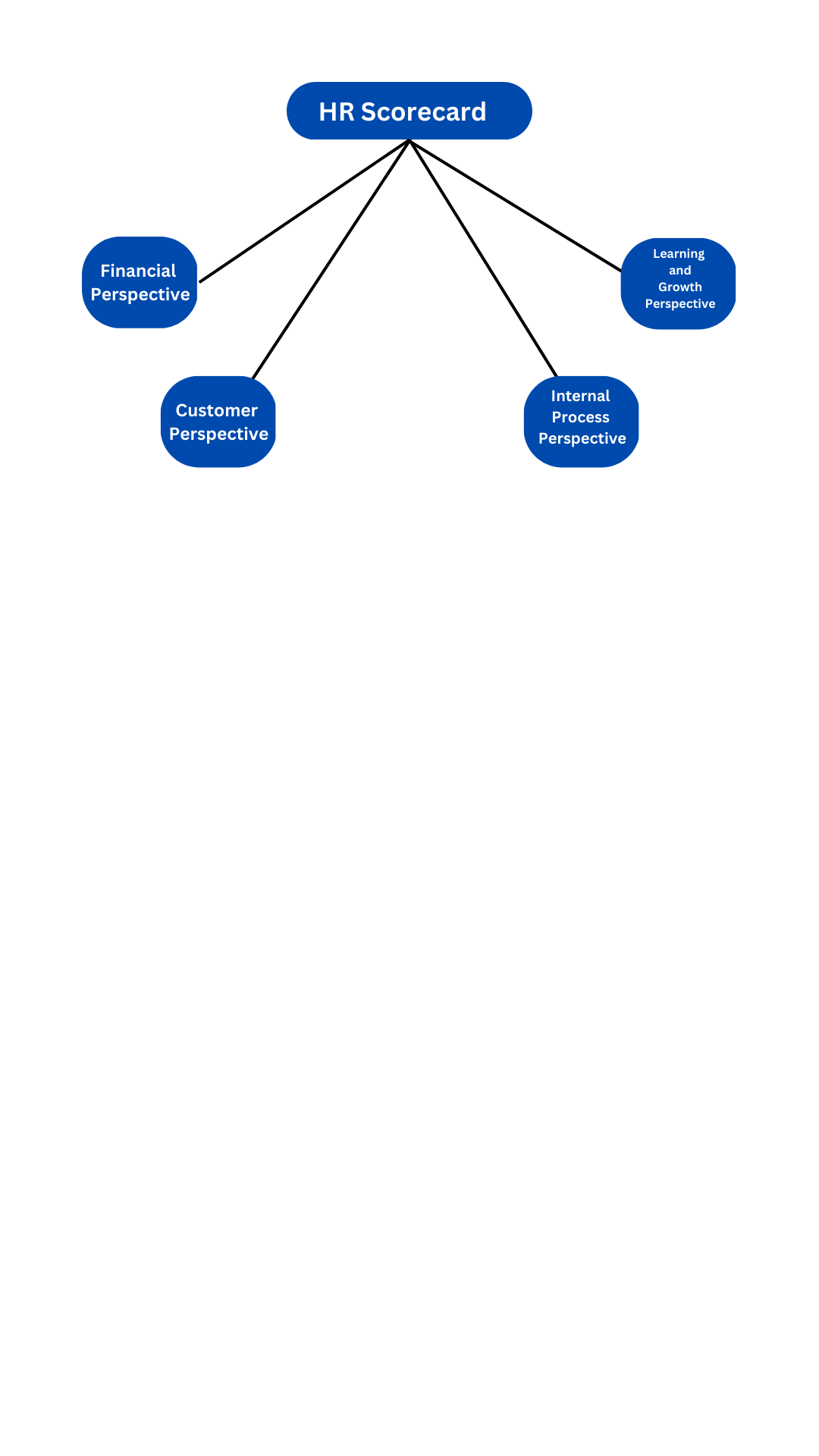HR Scorecard, Workforce Scorecard
The HR Scorecard is a strategic management tool used to measure and manage the performance of human resources within an organization. It provides a framework for aligning HR activities with business objectives and assessing the impact of HR initiatives on organizational performance.
The HR Scorecard typically consists of four main perspectives:
Financial Perspective: This perspective focuses on the financial impact of HR initiatives on the organization. It includes metrics such as labor costs, turnover rates, and ROI on HR investments.
Customer Perspective: This perspective focuses on the impact of HR initiatives on internal and external customers. It includes metrics such as employee satisfaction, customer satisfaction, and productivity.
Internal Process Perspective: This perspective focuses on the efficiency and effectiveness of HR processes and systems. It includes metrics such as time-to-fill vacancies, training and development hours, and HR process improvement initiatives.
Learning and Growth Perspective: This perspective focuses on the development and growth of employees and HR capabilities. It includes metrics such as employee engagement, leadership development, and employee retention rates.
Using the HR Scorecard, organizations can set strategic objectives, define performance indicators, measure progress, and make informed decisions about HR investments and initiatives. It can also help to identify areas of strength and weakness within the HR function, and to develop action plans to improve HR performance and contribute to the overall success of the organization.

Workforce Scorecard
The Workforce Scorecard is a strategic management tool used to measure and manage the performance of an organization’s workforce. It provides a framework for aligning workforce activities with business objectives and assessing the impact of workforce initiatives on organizational performance.
The Workforce Scorecard typically consists of four main perspectives:
Financial Perspective: This perspective focuses on the financial impact of workforce initiatives on the organization. It includes metrics such as labor costs, revenue per employee, and return on investment (ROI) on workforce investments.
Customer Perspective: This perspective focuses on the impact of the workforce on internal and external customers. It includes metrics such as customer satisfaction, employee satisfaction, and productivity.
Internal Process Perspective: This perspective focuses on the efficiency and effectiveness of workforce processes and systems. It includes metrics such as time-to-fill vacancies, workforce training and development hours, and workforce process improvement initiatives.
Learning and Growth Perspective: This perspective focuses on the development and growth of the workforce and its capabilities. It includes metrics such as employee engagement, leadership development, and workforce retention rates.
Using the Workforce Scorecard, organizations can set strategic objectives, define performance indicators, measure progress, and make informed decisions about workforce investments and initiatives. It can also help to identify areas of strength and weakness within the workforce function and to develop action plans to improve workforce performance and contribute to the overall success of the organization.